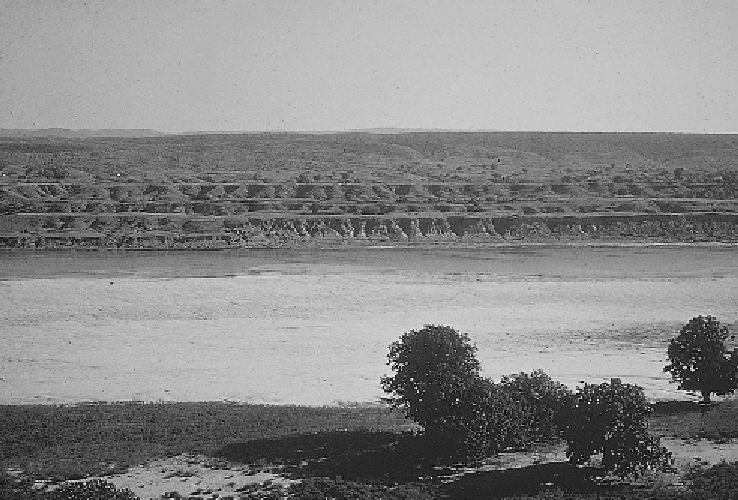Geoscience Reference
In-Depth Information
Figure 19.4. River terraces, middle Son Valley, north-central India.
The oldest formation in the Son Valley is informally known as the Sihawal form-
ation, and is late Middle Pleistocene in age. It consists of a lower colluvial-alluvial
member of locally derived quartzose sandstone blocks in a matrix of clay, and con-
tains Lower Palaeolithic evolved Acheulian biface tools that are often very fresh. The
lower member is overlain by a bed of silty clay that is entirely devoid of sandstone
blocks and stone tools and may represent wind-blown dust. The lower unit appears
to have been deposited by a combination of debris flows and alluvial fans at a time
when the Son had entrenched its channel down to bedrock and had eroded any older
alluvium from the valley floor (Williams et al.,
2006b
). The climate at that time was
probably semi-arid with sparse vegetation along the valley sides and occasional strong
downpours that were able to mobilise rocky debris and transport it downslope. The
upper unit contains pollen of probable Himalayan origin, and if it is indeed a loess
deposit, it would indicate a dry and windy climate, consistent with the absence of any
prehistoric human presence in the valley at that time.
The Patpara formation is at least 10 m thick and, in addition to local quartz,
sandstone and mudstone gravels, contains abundant pebbles of agate, chalcedony and
other microcrystalline silicic rocks derived from the Deccan Trap basalts in the Son
headwaters to the west. The matrix is a red clay. In places, the gravels are cemented
by iron, indicating prolonged deep weathering under a humid tropical climate (see
Chapter 15
). A red-brown clay overlies the gravels, which contain a dominantly

